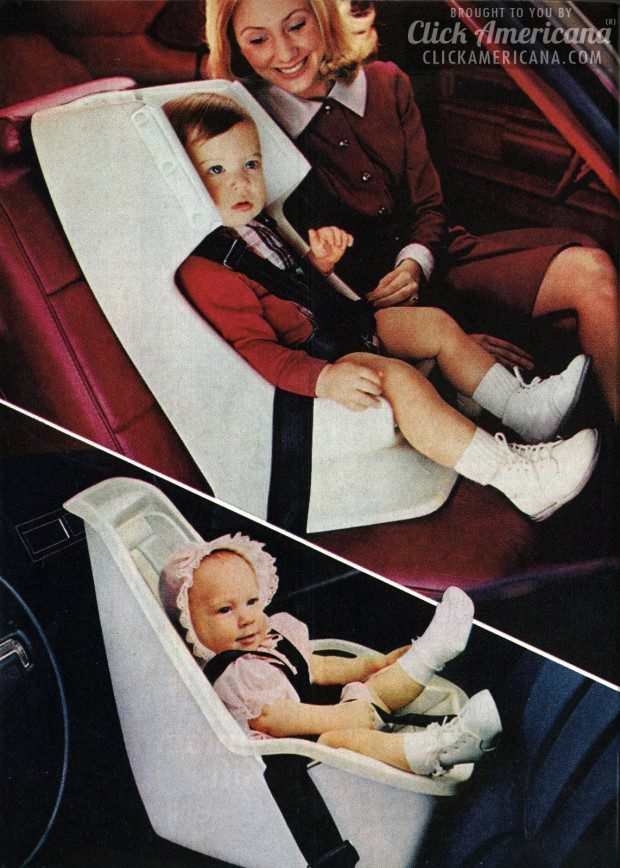I am going to break one of my golden rules, where I refrain from offering an emotional opinion on a topic, by saying that parents should only buy rear facing child restraint seats up until their kids move into booster seats, typically around 4 years of age. Whilst there is overwhelming evidence supporting the use of rear facing seats, in this post I will be expressing my personal views.
When our Dragon was born in 2012, being married to a Swede meant the only option for us regarding child car seats was rear facing. This was after the mandatory requirements by law in most parts of the world that all babies must be rear facing (typical birth to 10 kg (22 lb), which is from birth to about 11 months for boys or 14 months for girls). After this, the choice of facing your child forwards or rearwards becomes the parents’.
The Swedish NTF (The National Society for Road Safety) have done extensive research into forward facing and rear facing child restraint seats, and have run campaigns in Sweden to ensure that all parents put their kids in rear facing seats. Though my wife offered coherent arguments for rear facing seats I was not sold on it, and had to conduct my own research; after all in the UK this was not the norm.
Early into my research I discovered that rear facing seats for Groups I (9 to 18 kg (20 to 40 lb), which is 9 months to 4 years roughly) is the only option. But it was very clear that in the majority of countries outside Sweden and the rest of Scandinavia that they did not have either the awareness or knowledge about the safety benefits of rear facing child restraint seats. Going into shops, we were told by those assisting us that the rear facing seats were a lot heavier, cost more, difficult to fit and not nice for the child. At no point did the shop assistants inform us of the safety benefits of rear facing child seats, just the negatives.
Put simply, rear facing child restraint seats reduce the risk of death or injury significantly. It is up to 5 times safer than a forward facing car seat; it offers protection to a child’s head, neck and spine in frontal collision, which is roughly 80% of accidents, and it gives much superior protection in side collisions. In an accident a rear facing child is pushed further into the car seat where they are well protected by the shell of the seat, whilst in a forward facing seat, the body of the child is thrown forward, thus placing significant pressure on the head, neck and spine. Whilst I would question the 5 times safer than forward facing child seats (how does any research quantify a measure of safety by numbers or a rating system?), the science and research is however, very solid and holds up, so I can forgive this possible over exaggeration.
Through my research into rear facing seats and the best manufactures of them we discovered a Norwegian company called Besafe. These guys, in my humble opinion, are the godfathers of rear facing seats. They have done extensive research in this field and have also contributed to past regulations and the upcoming i-Size regulation ECE R129 which will make rearward facing travelling mandatory for children up to 15 months by approximately 2018. Their seats, I believe, are the best on the market when it comes to rear facing; we love them and our kids love them also. BeSafe ensures that their seats not only pass the ECE R44 regulations, which is standard for all child seats, but that they also pass the upcoming ECE R129 regulations. They do not stop there. They also ensure that their rear facing seats pass the Plus Test (+Test), which is a voluntary test in Sweden. It is the world’s most demanding test for child car seats. Not many car seats pass this and the ones that do are all rear facing. The Plus Test was developed through collaboration between VTI (Swedish National Road and Transport Research Institute), NTF, Folksam (the largest insurance company in Sweden), SIS (Swedish Standards Institute), Volvo and representatives of manufacturers of child restraint systems (of which BeSafe was a member).
The reasons for putting children forward facing prematurely, rather than continuing with a rear facing seat, cannot only come down to a heavier seat, a greater cost, difficulty in fitting and that it is not nice for the child to travel rear facing. In considering these points I can say that the weight of out rear facing seat is not much off the forward facing seat our friends use, when comparing two top end seats from each category; the difference in cost can be as little as £70, and a great difference is made to the level of injury in an accident; the rear facing seat is a little more complex to fit securely but you can easily get expert help in the shop it was purchased from; and, in the end, the child does not know any better. Our Dragon is now four years old and when we are not able to take our rear facing seats with us on holiday and have to hire forward facing seats he has never once complained when we returned him to rear facing. And even if he did, he does not understand that this could save his life and keep him from serious injury.
I believe that the only choice when deciding which child restraint car seat to buy, following the mandatory requirement by law, is rear facing, and parents, grandparents and others who transport children should be given a better knowledge of all the facts. If you would like to know more, ND has done his research and can tell you all you need to know about Forward Facing vs Rear Facing Child Restraint Seats. Please have a read!


